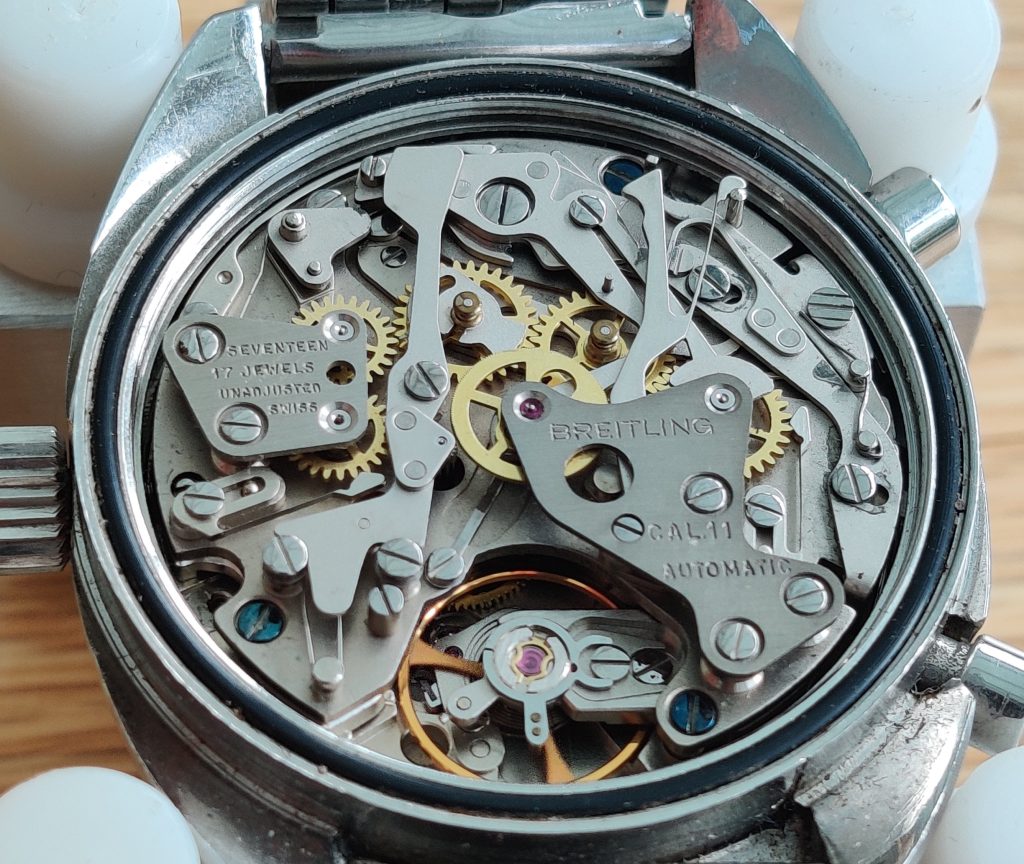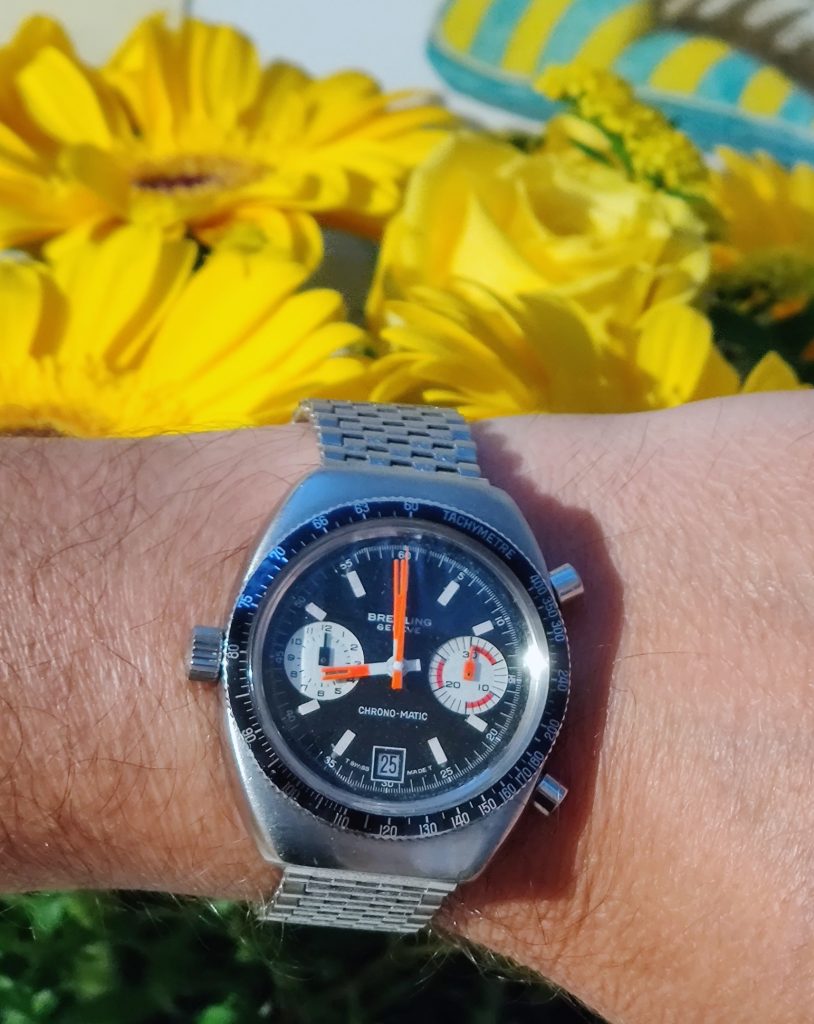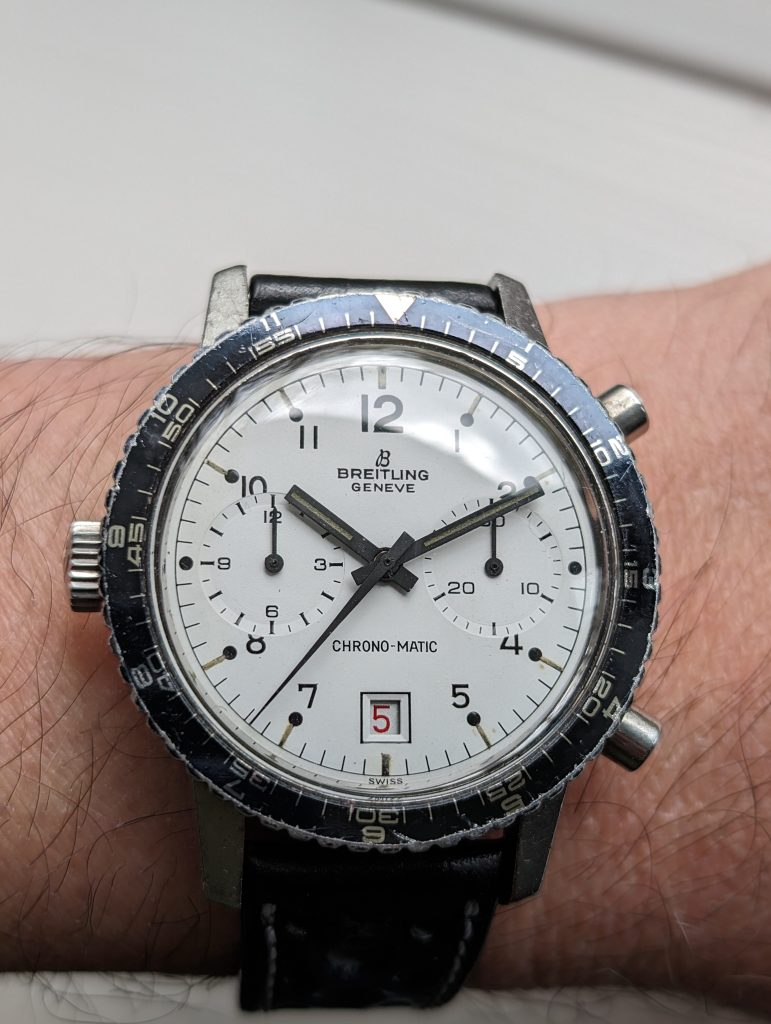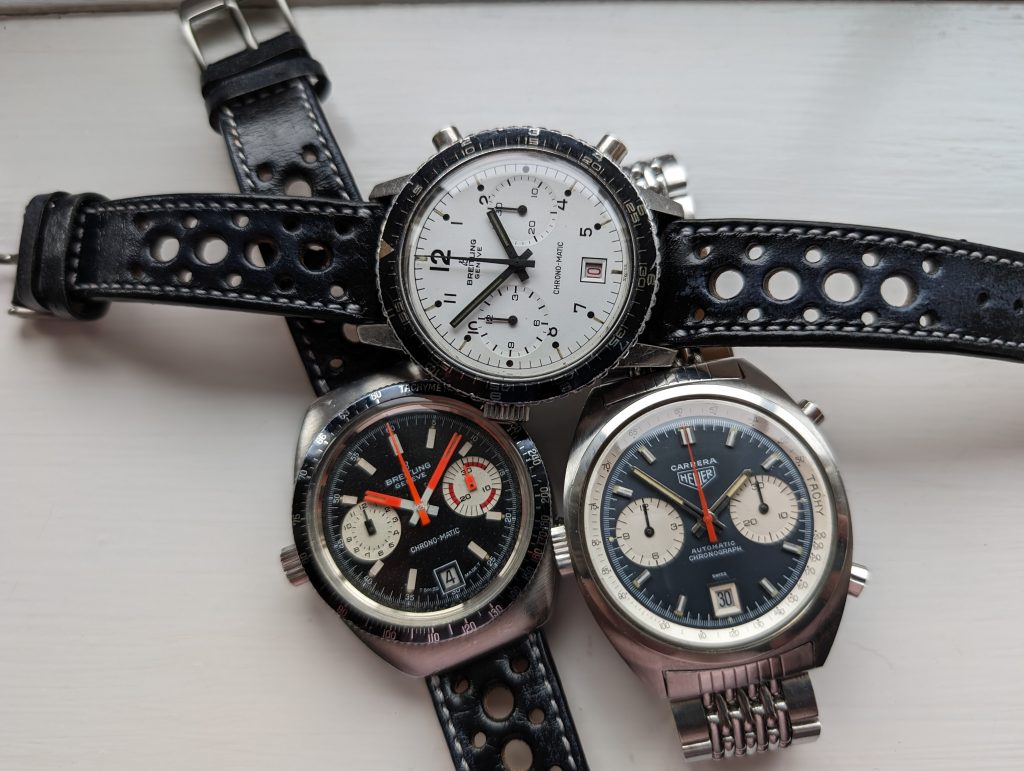I’m surprised I’ve never written about these before, though I have covered a bit of the Heuer automatic chronograph “Caliber 11” in the past.
To recap – in the mid 1960s, various watch companies were trying to pioneer a self-winding chronograph watch, but it was fiendishly difficult to make something that was small and yet robust enough. Zenith thought they’d cracked it after nearly 8 years of work and announced their “El Primero” in January 1969 though they didn’t actually start selling the watch until much later.
Meanwhile, the American watch company Hamilton acquired the Swiss firm Buren, who had pioneered making automatic watches with “micro-rotors” (rather than the half-dinner-plate swinger seen in other makes). It was envisaged that in partnership with Breitling, Heuer and a maker of chronograph components called Dubois-Dépraz, that they could collectively work on bringing these technologies together and then sell the resulting automatic chronograph movement to other makers as well as build their own.
The group was known as “Chronomatic” consortium, also “Project 99“. By the spring of 1969, they were showing off various watches featuring the new Caliber 11 automatic chronograph movement, built on a base Buren automatic movement and a Dépraz custom-built chronograph module fused onto it. This is why the crown is on the “wrong” side of the pushers, since space was tight and they had to flip part of the movement upside down.
Initially, all 3 makers – Breitling, Hamilton and Heuer – branded their watches “Chrono-matic” but Breitling soon acquired that name. Here’s an example of a mid 1969 Breitling 2114, on a 19mm Geckota leather racing strap:

If you can imagine the watch flipped vertically on its end so the crown stays on the left, removing the case back shows that the movement is actually upside down, at least according to all the inscribed text.

This particular 2114 was a bit of an impulse purchase online, and had I seen it carefully in hand I’d probably have thought the dial is too spotted to be of interest. However, I quite like it – so much so, I had it serviced by Mitka and he carefully relumed the hands and dial plots.
Here’s what it was like before its visit to Mitka:

In the above case, it’s on a Novavit NSA bracelet that I had kicking around – suits it pretty well!
Some years after the 2114, I picked up a 2110 in an auction

This one is really rare, I think – it’s a later Caliber 12 movement but the monochrome dial with white subdials and the arabic numerals is very unusual. Similar watches have occasionally appeared for sale (a white dial one sold in France here in 2009) and there was a “Datora” sold in 2001, with a different movement and sub-dial layout but a very similar look.

The two watches are notable for the different case shape – the 2110 has open lugs and 2114 is more of a tonneau shape where the case overlaps where the strap/bracelet attach.
As to the unusual dial layout – there are others in the wild on Instagram with all-black dials too. I’ve seen 2114 with all-black dial and arabic numerals too – Instagram – so who knows if they were mainstream, special-order or what. There’s even at least one 2114 with a PVD case and all-black dial. I certainly couldn’t find any catalogue images of the all-white or all-black options but there are enough out there for me to be confident they’re not redials or fakes.

3 left-hookers together … the 2110, 2114 and Heuer Carrera 1153N. I moved the 2110 on even though I really liked it. I have too many watches…
